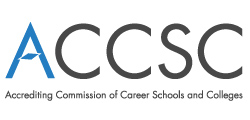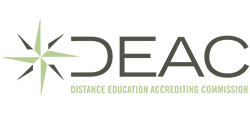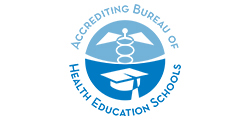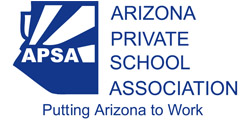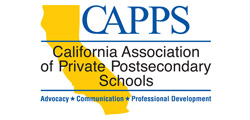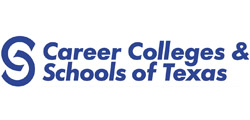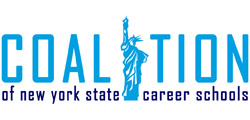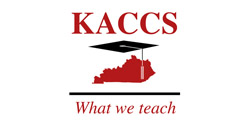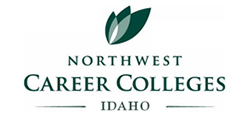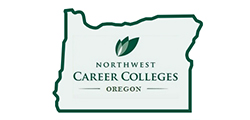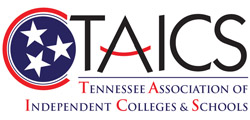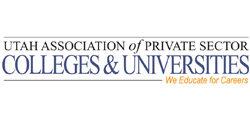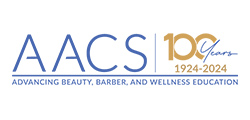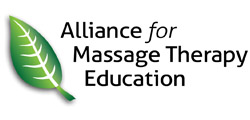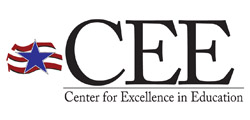Badge Evidence | Completed Courses (4 Hours Each)
ACCSC102Fulfilling the Standards of Accreditation: Academics
This course focuses on the ACCSC Standards of Accreditation which directly tie to the academic areas and program requirements for an accredited school. The course includes information on program development and design, educational policies and procedures, faculty, student services, and educational delivery methods.
CM107-CRDSustaining a Culture of Compliance: The Role of Faculty and Staff
This course is designed for either an institution's full or part time staff and faculty members. The course focuses on building and sustaining a campus-wide culture of compliance as opposed to simply providing a multitude of standards and regulations. In short, CM107 hopes to provide the information staff and faculty need to say or do the right things when interacting with both prospective and enrolled students about their education - online or face-to-face - as well as the consequences of saying or doing the wrong things whether by mistake or with intent. Components on ethics, customer service and fostering a culture of compliance in the new normal of educational delivery are also included.
This is a private course intended for associates employed by Concorde Career Colleges.
EC115Integrating Career Readiness Into Your Courses: Part I
This course will provide an overview of career readiness including information and activities that may be incorporated into your courses. This course, which forms Part I of a two-part series, provides details about four specific career readiness skills: critical thinking/problem solving, verbal/written communications, teamwork/collaboration, and information technology applications. Additional thoughts and resources will also be provided to allow you to consider multiple ways to assist students in developing these skills in your courses.
EC116Integrating Career Readiness Into Your Courses: Part II
This course will provide a brief review of career readiness and provide additional skills to incorporate into your courses. This course is Part II of a two (2) part series of courses. Therefore, this course will provide details about four (4) additional specific career readiness skills. These skills include leadership, professionalism/work ethic, career management, and global/multicultural fluency. Further thoughts and resources will also be provided to allow instructors to consider additional ways to incorporate these skills into their courses.
EC131How to Develop Virtual Reality Lessons
Virtual reality (VR) lessons can be implemented in all subject areas, and this course is designed to get teachers thinking about how it can be used in their classrooms. VR can be a nice addition to the teaching toolkit, but some resources, including hardware, will be needed. In this course we use the Meta Quest 2 headset by Oculus, but the results will be similar if different headsets are used. Various software applications will be shared that teachers can acquire for little or no cost.
EC140Introduction to Positive Psychology for Educators
Positive psychology is the science of human flourishing and is leveraged to cultivate well-being for students, teachers, and staff in schools around the world. You'll be introduced to the tools of positive psychology to help you and your students thrive in the classroom and in life. This course is designed to help you understand the science of well-being and how to employ it for yourself and in educational settings to support well-being and academic achievement. The modules cover positive psychology's origins, and the research and application of the PERMA model, Character Strengths, and positive education.
EC150Assessment Strategies for CTE Educators
During this course, participants will learn strategies for planning and implementing assessments in hands-on classes and career and technical education (CTE) learning environments. Effective design and implementation of assessments helps ensure that all students can grow and develop as learners' empowering them to build on their strengths. Perhaps even more important, good assessments help educators design their courses. In this course, educators will learn how to view assessments as formative representations of what students know at that moment, tools to help students understand how they learn and become expert learners, and essential instruments educators can use to actively assess their own approaches and instructional practices.
EC151Creating a Safe & Engaging CTE Environment for All Executive Functioning
This course aims to help CTE educators at the postsecondary level refine their teaching practice by creating welcoming, engaging classrooms (or shops, labs, theaters, farms, studios, job sites, etc.) for all learners. Participants in this course will explore how to create safe, meaningful, and engaging learning environments. You’ll learn about how to foster creative problem solving, bring student voice and experience into the classroom, bolster student engagement, and create a dynamic, learner-centered CTE environment.
This course is intentionally designed through the lens of Universal Design for Learning, or UDL. UDL is a research-based educational approach that optimizes teaching and learning. This course will highlight UDL-aligned practices and include concrete examples of how you can apply these practices in your CTE courses.
EC152Supporting Executive Functioning in CTE
Executive functions enable learners to do the following:
- Set goals
- Plan and strategize how they will meet goals
- Manage information and resources
- Monitor and assess their progress toward goals
ED101Effective Teaching Strategies
This introductory course covers the essential roles of a teacher and the competencies required to be a successful instructor in an educational institution. Proven techniques and strategies for planning and preparation are presented and discussed. In addition, the course offers effective methods for conducting the first class meeting and delivering course content. This course provides a solid foundation for new instructors and serves as an excellent refresher for more experienced instructors.
ED116Critical Thinking Processes and Applications
The majority of careers require the ability to think critically and problem solve at one level or another. Employers seek individuals who can think independently, propose solutions, and solve problems. The content in this course provides the foundation for critical thinking and demonstrates how people with different interests, abilities, and aptitudes approach problem solving. The course covers the different kinds of intelligence and how they impact critical thinking, for a broader understanding of how people process solutions to problems. It concludes with step-by-step instructions for helping students develop and refine their own critical thinking skills.
ED125Effective and Efficient Instructional Strategies
Planning Effective and Efficient Instruction provides new and experienced instructors with practical ways to design and deliver learning experiences that establish an environment that facilitates learning. The course summarizes important academic concepts while providing specific strategies for planning lessons, reaching learners, asking questions and assessing student mastery of the course and program objectives.
ED204Tomorrow's Learning Environment Today
Instructional planning and delivery is undergoing dynamic changes with the availability of technology and expanded avenues through which information can be provided. Instructors need to be aware of how they can expand their instructional formats to include the latest technology and learning theories. This course provides information about the different forms of learning and how they can be implemented into classrooms and laboratories. Other topics covered in the course include different strategies for learning including transformative and cooperative methods as well as collaborative and experiential methods that help to engage learners.
ED208Adult Learning Theories
When designing instruction for adult learners, it's important to consider a host of factors. This course describes the characteristics and motivations of adult learners, and the best practices and techniques for teaching them. It discusses the different theories of adult development and adult learning, and their relationships to the classroom experience. In addition, this course examines brain-based teaching strategies, the theory of multiple intelligences, and how the different parts of the brain are affected by new learning.
EL101Designing and Developing Online Courses
This introductory course will provide you with the knowledge and skills to create successful online courses, whether for faculty-supported distance education delivery or as a supplement to classroom instruction. You will learn to design and develop online courses that have structural integrity and navigational simplicity with a focus on student-centered learning and intellectual interaction. The course covers various learning activities that are supported in an e-learning environment and describes the typical components of an online course. We will provide you with the media strategies and course design methodologies that will allow you to develop online courses in an effective and efficient manner.
EL102Online Teaching Techniques
Your degree of success as an online instructor relies heavily on several factors, among which are your level of preparedness before the date on which the course is launched; your ability to make a smooth transition into the roles and responsibilities associated with teaching in an online environment; and the effectiveness and efficiency with which you manage learners, instructional transactions embedded in the course as well as the learning environment. In this course, you will learn how to project your authority and presence into the e-learning environment, build a relationship with each learner, promote and nurture learner participation, provide informative and constructive feedback in a timely manner, minimize attrition, manage communications, manage unacceptable behavior and resolve disagreements.
EL103RTeaching Online: A Student-Centered Approach
This course will provide you with the knowledge and skills to successfully author, teach, assess, and revise online courses. You will learn to develop a course framework with consistent modules. Building an online community and constructing a dynamic syllabus are important in helping you communicate with students. You will also learn how to develop an assessment plan that includes peer and self-assessment. No online course is complete without a comprehensive revision cycle. This course will walk you through the process of "closing the loop" to create a complete revision and improvement plan for your online course. We will provide you with ideas for student-centered learning that includes activities and intellectual interactions using a variety of technological tools.
EL104Teaching and Organizing a Virtual Learning Environment
This course will provide you with basic information to teach in a virtual learning environment and understand the importance of organizing course content. You will learn about the important role technology tools play in teaching and organizing an online course. You will also learn the difference between synchronous and asynchronous learning. As the components of each are discussed, you will further identify appropriate methods, develop guidelines, organize content, and establish a pattern of teaching for each method.
EL105ROnline Language: Communicating with Students
This course provides information to help you effectively communicate with students and encourage communication among students in an online environment. You will learn the importance of facilitating instructor-to-student (I2S), student-to-instructor (S2I), and student-to-student (S2S) communication. Digital technology tools play a vital role in the modern communication process, and several are discussed in this course. In addition, discussion is provided to help you further understand how to manage and measure communication in an online course and help students communicate effectively.
EL106Evaluating Student Learning in Online Courses
This course will provide you with the knowledge to effectively evaluate student learning in an online environment. Technology tools play a vital role in the evaluation process and several are discussed in this module. Discussion will also be provided to help you further understand how to complete formative and summative assessments, as well as the advantages and disadvantages of objective and subjective assessments. Value-added assessments are also discussed in light of how they can be completed and provide feedback for course revision.
EL107RDesigning Dynamic and Technology-Rich Learning Environments
This course outlines the main characteristics of "dynamic" course design for blended instruction and highlights effective teaching methods that facilitate the learning process. Participants in this course will be able to customize the design principles and methods presented here to suit their individual professional context.
EL108Preparing Students to Become Good Online Learners
This course will provide you with strategies and techniques to help prepare students for the online environment. To do so, you must also assess your strengths and weaknesses as an online instructor. As you help students assess their readiness for online learning, you are also preparing them for the expectations and realities of the online environment. By identifying students' strengths and weaknesses, you can provide guidance to help them achieve the learning outcomes. This course not only notes the necessary technical skills, it also discusses non-technical skills as well as techniques for successful learning and helping students develop their online persona.
EL109Using Rubrics to Enhance Online Learning
This course will inform you about the purpose of rubrics and will provide you with the techniques to develop rubrics as an assessment tool for student performance, processes and products. This course will explore types of rubrics, the role rubrics play in assessment, as well as the use of rubrics in evaluating elements of your online course to ensure your course is truly student-centered.
EL113Active Learning in an Online Environment
This course will provide you with a basic overview of the background and history of the popular instructional method called active learning. This method differs from traditional educational methods such as the lecture model. Active learning has a definite place in education especially in the online learning environments. It is used to support teaching outcomes like critical thinking skills, interpersonal skills and knowledge acquisition that all instructors wish for their students. However, active learning it calls for a change of attitude on the part of students and the instructor in order to be successful. But the advantages far outweigh the disadvantages as it can make students enthusiastic about learning. Learn about this brave new world of teaching and learning for the next generation.
EL116The Asynchronous, Self-Directed Learning Model
This course will provide you with a basic overview of designing and implementing asynchronous, self-directed online courses effectively. It will review the differences between synchronous and asynchronous online courses. Traditional components of face-to-face courses such as readings, written assignments, and discussions work well in the asynchronous online class environment, but what happens to laboratory assignments and applications? Can they fit into the online course model? Courses which need a lab component, especially the STEM (Science, Technology, Engineering, and Math) courses, may seem impossible to complete in the online environment. Practical examples of effective online lab situations will be provided in this module. This will assist in promoting student engagement and increasing the student's learning potential.
EL201ROnline Communication: Engaging and Retaining Online Learners
Research shows that supportive working relationships between students and institutional personnel are vital to student retention. For online students, these relationships are especially essential in preventing a sense of isolation and detachment from their academic experience. Because interactions with online students are most likely to occur via phone and text-based methods, developing retention-supporting relationships can be challenging. This course teaches online communication strategies that foster connection and engagement with online learners. Participants will develop a deeper understanding of (a) retention and attrition research, (b) online learning, and (c) technology's unique role in both the relationship-building process and the online student experience.
HE106CStudent Information, Rights, and Safety
In this lesson, you'll review the federal and accreditation standards governing the collection and disclosure of student information. In addition, federally mandated campus safety standards that impact operations at postsecondary institutions are reviewed.
Topics covered in this lesson include:
- Family Education Rights and Privacy Act (FERPA)
- Record of Complaint
- Title I of the Student Right-to-Know
- School Safety Enhancements Act
This is a custom version of HE106 providing a certification of completion.
LS101RDo You Manage Or Lead?
This course explores the critical differences between management and leadership. Participants will be introduced to definitions and myths about each area as well as how management and leadership must coexist for an organization to operate effectively. Participants will explore their own management/leadership tendencies through exercises to see leadership and management in action.
LS102How Do You Lead?
Not everyone is suited for, or desires, a leadership position. One of the first steps to being an effective leader is to understand the desire to lead in the first place. Participants will explore their motivation to lead and develop a deeper understanding of their leader style(s).
LS103RYour Leadership Impact
To improve your impact and effectiveness as a leader, you must not only understand the role of a leader, but you must also take into consideration the followers and the situation. This course defines leadership impact and explores the interactional framework for leadership.
LS104RYour Leadership Legacy
The higher education industry provides a wealth of opportunities and challenges for those seeking leadership positions. In this course, participants will gain a deeper understanding of the higher education sector and themselves. The importance of higher education institutions will be explored along with developing a personal leadership legacy.
LS105RYour Leadership Toolkit
Get ready to add a number of skills to your toolkit as you develop as a leader! This course focuses on increased self-awareness in communication styles and learning; developing deeper understanding through empathic listening; and motivating through innovation.
LS106This Way to Leadership
This course provides you with a framework to put your self-discovery and learning into a workable plan to further develop your leadership skills. A step-by-step process is offered to help you create a meaningful Personal Leadership Development Plan (PLDP) complete with the development of SMART Goals and advice from some of today's leaders in the higher education sector.
ML111Leading and Motivating
This course provides a synopsis of the essential tasks of leadership setting direction, aligning people, and motivating others. You will learn how to recognize the skills and characteristics of effective leaders, create an inspiring vision, and energize people to support and work toward your goals.



